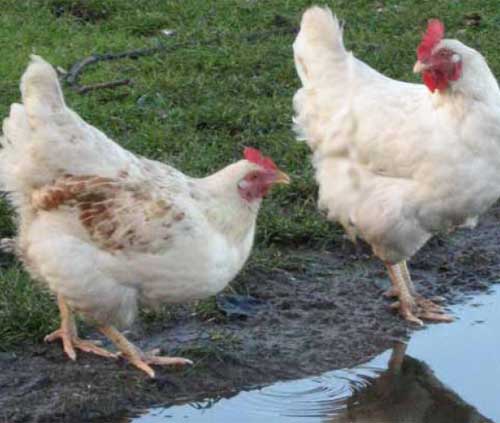Research into the digestion of organic laying hens

Research by Wageningen UR Livestock Research has shown that the current nutritional data for laying hens in the Feed Table of the CVB in many cases can not be applied to biological materials. It is based on outdated digestibility studies with adult roosters
Therefore, the Dutch Ministry of Agriculture commissioned the research, which was conducted by the product working group Poultry meat and eggs of Bioconnect. The aim was to provide a accurate method of calculating the nutritional value of organically grown raw materials for layers.
Two digestibility studies with organic layer diets were performed.
- In the first experiment, besides a basal diet, seven different organic diets were included in this experiment to determine the digestibility of wheat, maize, peas, rape seed expeller, sunflower seed expeller, sesame seed expeller, and heat treated soybean meal.
- In the second experiment, two qualities of corn (moderate and good), barley, triticale, rye, vicia faba and soy bean meal expeller are investigated. In these raw materials, faecal digestibility of organic and inorganic mater, crude protein, crude fat, crude fibre, gross energy and amino acids were determined. Hens were housed in digestibility cages. The hens had ad libitum access to feed and water. In this experiment, the indicator method was used, whereas titanium oxide (experiment 1) or chromium oxide was used as a marker. Manure was collected semi quantitatively over four days (collection of manure 2 times per day) during the main period.
The study confirmed that the values of the Dutch CVB Table often could not be used for organic laying hens. In this Table, however, the values for triticale and vicia faba are lacking. By that, the results of these ingredients in the current study are really unique. Compared to the Dutch CVB Table, only slight differences in digestibility coefficients and MEn values were observed for organic produced barley, sunflower seed expeller, and corn (moderate and good quality). Digestibility coefficients and energy contents were considerably reduced in organic wheat, peas, sesame seed expeller, heat treated soy bean meal en rye, whereas these values were clearly improved in organic rape seed expeller and soy bean meal expeller.
Based on the chemical composition of the organic produced ingredients, and based on the digestibility coefficients as presented in this study, the nutritional value of organic raw materials can be estimated appropriately in practice. This knowledge allows nutritionist to optimize well balanced diets that closely fit the requirements of organic housed laying hens. A correct balance in diet composition is beneficial to maintaining or improving performance, health status and environmental excretions of these hens.











